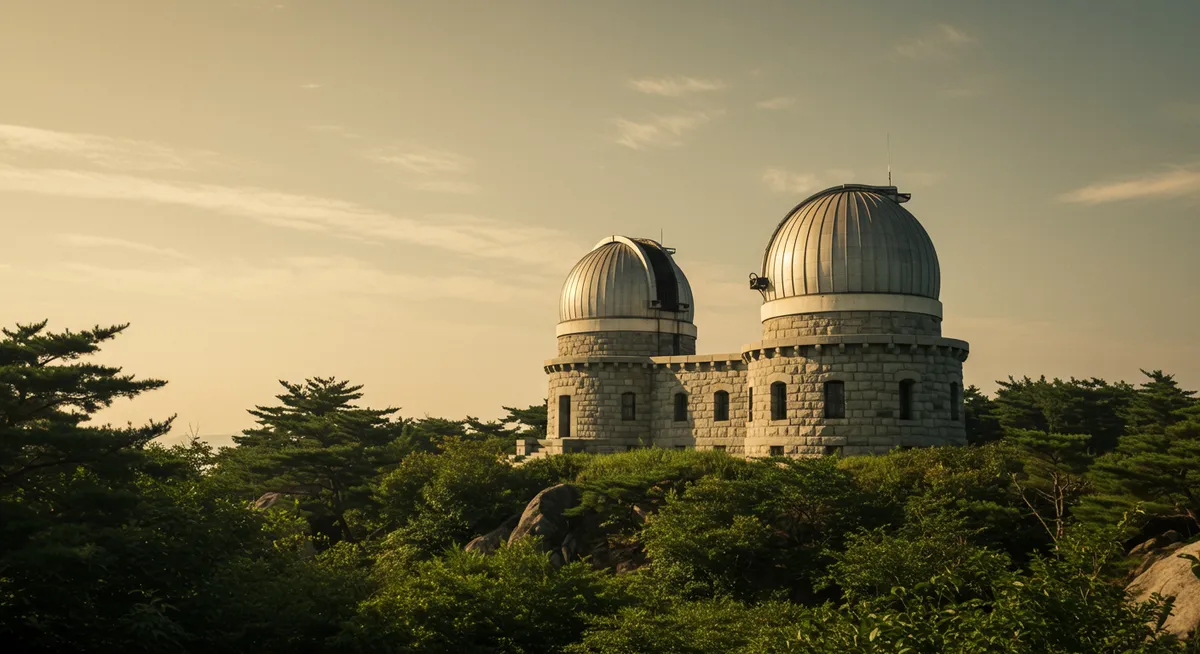
Cheomseongdae Observatory: History & Facts
Table of Contents
Want to find the best travel deals for this destination? Chat with our travel hacking specialist!
Get Travel HacksCategory: cheomseongdae-observatory-history-and-facts
Cheomseongdae Observatory: Unveiling Gyeongju's Ancient Star-Gazing Tower
Having personally explored the ancient wonders of Gyeongju, I can attest that the Cheomseongdae Observatory stands as a profound testament to Silla Dynasty ingenuity. This guide delves into Cheomseongdae Observatory history and facts, offering a comprehensive look at this remarkable structure. Often called the 'Star-Gazing Tower,' it’s much more than just old stones; it's a window into early astronomical science and a pivotal piece of Korean heritage. For anyone planning to discover the historical heart of Korea, understanding Cheomseongdae is essential to truly appreciate the country's rich past. You can find more comprehensive travel insights on Plan Vacation Asia.
The Ancient Roots of Cheomseongdae
The Cheomseongdae Observatory, located in Gyeongju, South Korea, proudly holds the title of the oldest existing astronomical observatory in East Asia. Constructed during the reign of Queen Seondeok (632-647 AD) of the Silla Dynasty, its very existence speaks volumes about the advanced scientific knowledge of the time. My initial visit truly brought home the historical depth; standing before it, you sense the echoes of a kingdom deeply connected to the cosmos. This stone structure, a UNESCO World Heritage site, served as a vital tool for Silla astronomers, allowing them to monitor celestial events for agricultural and spiritual purposes. Understanding this ancient purpose is key to appreciating its enduring significance.
Architectural Marvel and Symbolic Design
The unique bottle-shaped structure of Cheomseongdae Observatory is not merely aesthetic; it's steeped in profound symbolism. Composed of 365 granite stones, representing the days of the year, it’s a brilliant fusion of architecture and calendrical knowledge. These stones are arranged in 27 layers, believed to symbolize Queen Seondeok, the 27th ruler of Silla. The square top and circular base ingeniously represent heaven and earth, respectively. I particularly find the precise alignment of its central window fascinating, which faces due south. This careful design underscores the Silla people's deep understanding of astronomy and their meticulous approach to tracking the heavens for accurate seasonal predictions and understanding the cosmic order for their governance.
Cheomseongdae in Silla's Scientific Legacy
Cheomseongdae Observatory stands as a powerful symbol of the Silla Dynasty's commitment to scientific advancement, far beyond simple star-gazing. This structure allowed Silla's astronomers to predict solstices and equinoxes, crucial for a predominantly agrarian society. These celestial observations directly informed agricultural practices and the timing of important rituals. Visiting as part of a broader Gyeongju itinerary, one quickly recognizes how integrated science was into daily life and governance during this period. The observatory isn't just a relic; it’s an active testament to the intellectual prowess that defined Silla's golden age, contributing significantly to the kingdom's prosperity and stability. It underscores the profound impact of scientific inquiry on ancient civilization.
Visiting Cheomseongdae Today
Today, the Cheomseongdae Observatory remains one of Gyeongju's most iconic landmarks and a must-see for any visitor. While you cannot enter the structure itself, its presence within the Tumuli Park offers a serene glimpse into the past. Many find that the best time to visit Gyeongju, and Cheomseongdae specifically, is during spring or autumn when the surrounding flowers and foliage enhance its ancient beauty. My personal tip: visit at dusk to see it beautifully illuminated against the night sky, a truly magical experience. This ancient astronomical marvel is not only a historical treasure but also one of the top things to do in Gyeongju, easily accessible and a perfect focal point for understanding the city’s rich heritage. It’s an essential stop for anyone exploring Gyeongju’s travel guide.
Frequently Asked Questions
What was Cheomseongdae Observatory used for?
Who built Cheomseongdae and when?
Is Cheomseongdae Observatory a UNESCO World Heritage site?
The Cheomseongdae Observatory truly stands as a magnificent testament to the Silla Dynasty's foresight and scientific prowess. Its intricate design, steeped in Cheomseongdae Observatory history and facts, reveals a profound connection to the cosmos. This ancient star-gazing tower is more than just an archaeological site; it's a symbol of Korea's enduring intellectual legacy. Discovering its significance enhances any visit to Gyeongju, offering a deeper appreciation for this historic city. Plan your trip to Gyeongju and experience the timeless wonder of Cheomseongdae for yourself, stepping back in time to an era of innovation and celestial wisdom.